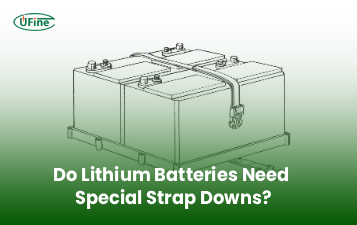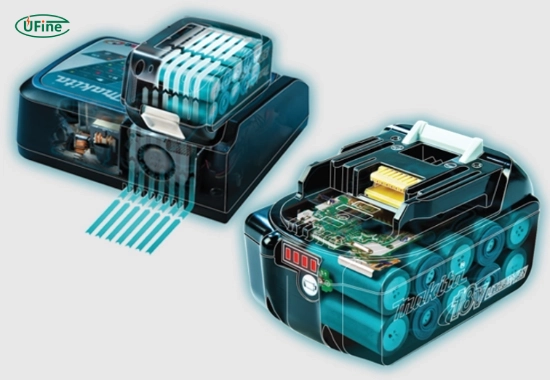
- Part 1. What is a power pack battery?
- Part 2. How does a power pack battery work?
- Part 3. What are the types of power pack batteries?
- Part 4. What can a power pack battery be used for?
- Part 5. What size power pack battery do you need?
- Part 6. How long does a power pack battery last?
- Part 7. What features should you look for in a power pack battery?
- Part 8. Can you charge a power pack battery using solar panels?
- Part 9. Are power pack batteries safe to use?
- Part 10. How do you maintain a power pack battery?
- Part 11. FAQs about the power pack battery
A power pack battery is a portable energy storage device that provides power to various devices and appliances when traditional power sources are unavailable. These versatile units are essential for off-grid living, emergency preparedness, outdoor adventures, and everyday use.
So, what is a power pack battery, and how does it work?
A power pack battery stores electrical energy in rechargeable cells and delivers it through various output ports to charge or run devices. It typically includes internal electronics that manage safety, voltage output, and charging efficiency.
This guide will help you understand everything about power pack batteries, from how they function to how to choose the best one for your needs.
Part 1. What is a power pack battery?
A power pack battery is a compact, self-contained unit that houses rechargeable battery cells and output ports such as USB, AC, or DC. It acts as a mobile energy bank, allowing you to store electricity and use it later to charge phones, laptops, lights, small appliances, and more.
Unlike traditional batteries, power pack batteries often include smart features like:
- Built-in charge controllers
- Battery management systems for safety
- Digital displays or LED indicators
- Multiple output options for different devices
- Quick charging support
They are especially popular for people who need portable power without being tied to the grid.
Part 2. How does a power pack battery work?
A power pack battery captures energy from an external source, such as a wall outlet or solar panel, and stores it in internal battery cells. The stored energy is converted to a suitable voltage and current to power connected devices when needed.
The process involves three main stages:
Charging
The battery pack is connected to a power source. Energy flows into the internal cells and is stored chemically.
Storage
Energy is stored in the battery until it is needed. Advanced battery management systems ensure the cells remain balanced and safe.
Discharging
When a device is connected, the battery delivers energy through its output ports. Some models include inverters to convert direct current into alternating current for household appliances.
This process is managed by built-in circuitry that regulates voltage, prevents overloads, and ensures safe operation.
Part 3. What are the types of power pack batteries?
Not all power pack batteries are the same. They come in different types based on the battery chemistry used inside.
1. Lithium-ion batteries
These are the most common in power packs. They are lightweight, have high energy density, and last hundreds of charge cycles.
2. Lithium polymer batteries
Slightly more expensive, but offer flexible shapes and are often found in slim or rugged devices. They are also less prone to leakage.
3. Lead-acid batteries
They are heavier and bulkier, but much cheaper. They are often used in automotive jump starters or large backup systems, but they are not ideal for daily portable use.
4. Nickel metal hydride batteries
Once popular, these are now less common due to their lower efficiency and higher self-discharge rate.
Each type has different benefits, and the right one depends on your specific needs for portability, cost, and power capacity.
Part 4. What can a power pack battery be used for?
Power pack batteries are incredibly versatile and can be used in many real-life situations. Here are some practical uses:
- Charging smartphones, tablets, and wearables
- Powering laptops, cameras, and drones
- Running LED lights and small fans
- Operating CPAP machines for medical needs
- Jump-starting car batteries
- Providing backup power during storms or outages
- Powering camping gear or outdoor tools
- Charging electric bikes or scooters
Some advanced battery packs can even support small kitchen appliances like blenders or coffee makers.
Part 5. What size power pack battery do you need?
The size and capacity of the power pack you need depends on what you plan to power. Capacity is usually measured in milliamp hours (mAh) or watt hours (Wh). Here is a quick guide:
| Device or Use | Recommended Capacity |
|---|---|
| Smartphone or smartwatch | 5000 to 10000 mAh |
| Tablet or camera | 10000 to 20000 mAh |
| Laptop | 20000 to 30000 mAh |
| CPAP machine or mini fridge | 300Wh to 500Wh |
| Home backup or appliances | 500Wh to 2000Wh or more |
If you plan on off-grid living or backup during power cuts, choose a battery pack with at least 500Wh.
Part 6. How long does a power pack battery last?
Battery life can be measured in two ways:
1. Usage time per charge
This depends on the battery’s capacity and the power draw of the devices you connect. A power pack with a 300Wh capacity can run a 30-watt device for roughly 10 hours.
2. Overall lifespan
This is measured in charge cycles. A lithium-ion power pack battery usually lasts between 300 and 500 cycles, which translates to 3 to 5 years of regular use.
Proper maintenance and storage can extend the life of your battery significantly.
Part 7. What features should you look for in a power pack battery?
When buying a power pack battery, here are the most important features to consider:
- Battery capacity
Higher capacity means longer usage time. - Port options
Look for USB A, USB C, AC, and DC outputs depending on what you will power. - Fast charging support
Power Delivery or Quick Charge can speed up charging for compatible devices. - Digital display
Shows real-time battery level and output status. - Solar compatibility
Useful for off-grid or eco-friendly charging. - Safety protections
Overcharge, overload, short circuit, and temperature protection are must-haves. - Build quality
Rugged, weather-resistant designs are best for outdoor use.
Part 8. Can you charge a power pack battery using solar panels?
Many power pack batteries can be charged using solar panels, making them perfect for outdoor adventures and sustainable living.
To do this, you will need:
- A solar panel with the correct voltage output
- A power pack with solar input compatibility
- A solar charge controller for safe and efficient charging
Solar charging is slower than wall charging, but provides independence from the grid and is eco-friendly.
Part 9. Are power pack batteries safe to use?
Yes, high-quality power pack batteries are designed with multiple safety features to protect the user and the device.
These include:
- Overcharge protection
- Over discharge protection
- Short circuit protection
- Temperature control
- Auto shutoff
Avoid using low-quality or unbranded power packs, as they may lack these essential safety systems.
Part 10. How do you maintain a power pack battery?
To maximize the lifespan and performance of your power pack battery, follow these maintenance tips:
- Keep it charged
Do not let the battery drop below 20 percent too often. - Avoid extreme temperatures
Store and use within the recommended temperature range. - Use the right charger
Always use the charger provided or recommended by the manufacturer. - Store it properly
If it is not used for a long time, store it in a cool, dry place with a 50—to 80% charge. - Clean the ports
Dust and dirt in ports can affect performance.
Proper care can easily extend the life of your battery by several years.
Part 11. FAQs about the power pack battery
What is the difference between a power pack and a power bank?
A power bank is usually small and designed specifically for phones and gadgets. A larger and more powerful power pack battery can run laptops, appliances, and even medical devices.
Can a power pack battery run a refrigerator?
Some high-capacity power packs, especially those above 500Wh, can run a mini fridge for several hours. Always check the fridge’s power consumption rating and match it with the power pack’s output.
How do I know when my power pack battery is fully charged?
Most models have LED indicators or digital screens that show the charge level. The battery is fully charged when all indicators are lit or the screen displays 100 percent.
Is it safe to leave my power pack charging overnight?
Yes, modern power packs have built-in safety systems that prevent overcharging. However, unplugging once charging is complete is still a good practice.
Can I take a power pack battery on a plane?
Yes, but there are limits. Most airlines allow batteries under 100 watt hours in carry-on luggage. Larger batteries may require approval, and checked baggage is usually not allowed.
Related Tags:
More Articles

Do Lithium Batteries Require Special Strap Downs? (Safety + Vibration Control)
Discover why lithium batteries require special strap downs to prevent vibration damage, terminal stress, and internal component issues.
Battery Strap Down Safety Tips: Preventing Vibration Damage and Terminal Stress
Follow these expert battery strap down safety tips to prevent vibration damage, terminal stress, and ensure LiFePO4 battery longevity.
How to Choose a Good 18650 Battery with Reliable Quality?
Battery quality defines performance and safety. Ufine Battery shares how to source good 18650 batteries and avoid unstable suppliers.
Can I Use a Universal Battery Strap Down on LiFePO4 Batteries? (Compatibility Guide)
Learn whether universal battery strap downs are compatible with LiFePO4 batteries, and how to install them safely for vibration control.
Battery Strap Down vs Battery Hold-Down Bracket: What’s the Difference?
Compare battery strap downs and hold-down brackets. Learn key differences, installation tips, and which is safer for lithium batteries.



